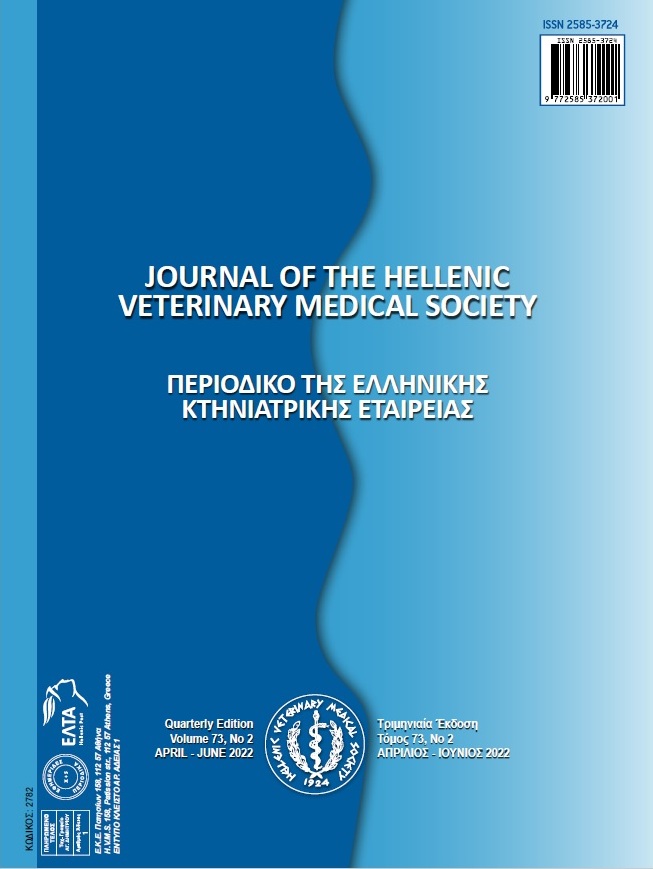Ischemia-modified albumin levels as a biomarker of ischemic injury in dogs with parvoviral enteritis
Abstract
The aim of this study was to determine ischemia-modified albumin levels in dogs with parvoviral enteritis. The study was carried out on a total of 24 dogs, 16 with parvoviral enteritis (patient group) and 8 healthy (control group). The diagnosis of parvoviral enteritis was made by clinical findings, immunochromatographic rapid diagnostic kit, and PCR analysis of stool samples. For blood analysis, 3 ml of blood was taken from Vena cephalica antebrachi of dogs into tubes without anticoagulant before treatment, and the tubes were kept at room temperature for 30 minutes, then centrifuged at 5000 rpm for 5 minutes, serum samples were removed and the samples were stored at -20°C until analysis. While IMA, IMAO, and cTn I levels and capillary refill time were significantly higher in dogs with parvoviral enteritis than in healthy dogs (P<0.05), albumin levels were significantly lower (P<0.05). As a result, it was observed that cardiac damage developed in dogs with parvoviral enteritis and it would be useful to evaluate IMA and IMAO levels in the evaluation of ischemic damage.
Article Details
- Zitationsvorschlag
-
Çakıral, E., Baydar, E., Karapınar, Z., & Aydogdu, U. (2025). Ischemia-modified albumin levels as a biomarker of ischemic injury in dogs with parvoviral enteritis. Journal of the Hellenic Veterinary Medical Society, 76(2), 9009–9014. https://doi.org/10.12681/jhvms.30275
- Ausgabe
- Bd. 76 Nr. 2 (2025)
- Rubrik
- Research Articles

Dieses Werk steht unter der Lizenz Creative Commons Namensnennung - Nicht-kommerziell 4.0 International.
Authors who publish with this journal agree to the following terms:
· Authors retain copyright and grant the journal right of first publication with the work simultaneously licensed under a Creative Commons Attribution Non-Commercial License that allows others to share the work with an acknowledgement of the work's authorship and initial publication in this journal.
· Authors are able to enter into separate, additional contractual arrangements for the non-exclusive distribution of the journal's published version of the work (e.g. post it to an institutional repository or publish it in a book), with an acknowledgement of its initial publication in this journal.
· Authors are permitted and encouraged to post their work online (preferably in institutional repositories or on their website) prior to and during the submission process, as it can lead to productive exchanges, as well as earlier and greater citation of published work.




